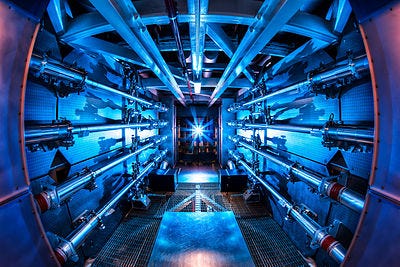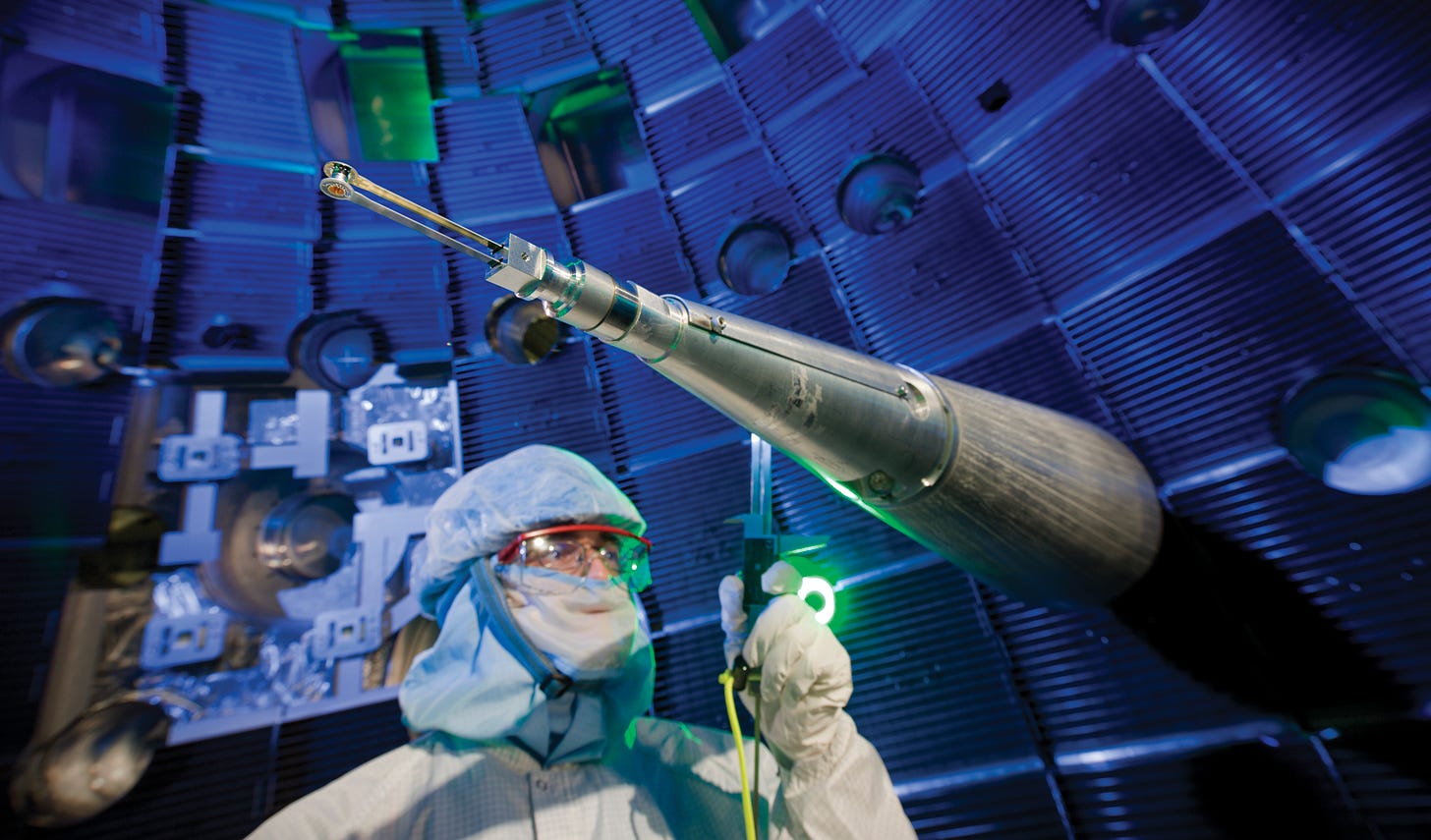Here's how to build laser weapons from Star Wars and Star Trek?
Future of Lasers - Lightsabers, Ray Guns and Death Stars
We have never succeeded in slowing down our nuclear fusion reactors. - Wilson Greatbatch
Greetings, fellow Bohron
H.G. Wells introduced us to laser weapons in his 1889 novel War of the Worlds. From their tripods, Martians destroy entire cities on Earth using Heat Rays which release an enormous amount of heat energy.

James Bond movie Goldfinger was the first to feature these lethal weapons. The credit for making them world-famous goes to Star Wars and Star Trek. Lightsabers, death stars, and ray guns are all based on laser technology.
Why are laser weapons still a dream?
Star Trek came out in the 1960s followed by Star Wars in the 1970s. Given that half a century has already passed, why haven't we been able to develop them till now?

Ray Guns fall victim to technological difficulties:
Lack of portable power pack
For such weapons to work, we need power packs that can fit in a space as small as your palms and still can provide a huge amount of energy for a long time. Maybe nanotechnology will provide us with miniature batteries within this century.
Stability of Lasing Medium
Theoretically, there is no limit to the amount of energy that can be pumped into a laser. However, if too much energy is concentrated in a small space, the laser may overheat and crack.

Lightsabers face the wrath of known physical laws::
Solid Light
As far as we know, it is impossible to solidify light.
Finite Length
A light beam keeps on travelling forever, it doesn't terminate midair.
We already have a modified version of a lightsaber, known as a plasma torch. It consists of a thin hollow rod with holes drilled on its side. When plasma flows through the rod, it escapes out of the holes giving a look of glowing tube of superhot ionized gas.

Finally, the problem with developing a death star is that we would need a laser of unimaginably high power. The most powerful lasers created yet are being used for building fusion reactors to harness the power of stars on Earth, similar to Doc Ock's fusion reactor in Spiderman 2.
So what are the potential candidates to build a death star? Let’s find out.
Inertial Confinement Fusion (ICF)

Inside a long tunnel, a very large system of Nd:glass lasers emits high energy parallel laser beams. These laser beams strike a succession of mirrors which are carefully placed around a sphere to direct them uniformly into a tiny pellet of lithium deuteride. This causes the pellet to vapourize and compress.
For the conservation of momentum to hold, the collapse creates a shockwave that travels outwards, increasing the temperature up to million degrees as required for the fusion process to occur.

In ICF, A huge amount of energy and neutrons are released. These neutrons strike and heat a spherical blanket around the chamber. The heat produced can be used for running turbines to generate electricity.

However, an unsolved practical problem has kept the scientists from mimicking the action of a death star. As it turns out, it is exceedingly difficult to focus laser beams evenly onto the pellet. To achieve the full ignition, we would have to solve the problem of lack of sphericity.
The National Ignition Facility(NIF) at the Lawrence Livermore National Laboratory(LLNL) in California is the largest ICF device in the world. In August 2021, NIF reported a successful yield of 70% of input energy.
Magnetic Confinement Fusion (MCF)

The other branch of fusion energy research is MCF, a process in which the plasma of hydrogen gas is kept inside a powerful magnetic field and heated to 100 million degrees. Wire coils wind the surface of a large doughnut-shaped machine called Tokamak, and the gas circulates inside. At very low temperatures, coils become superconducting. The magnetic field produced by current passing through the coil confines the plasma inside the tokamak. The current inside the doughnut heats the gas to millions of degrees.

International Thermonuclear Experimental Reactor(ITER), a collaboration between several countries including India, is an under-construction fusion megaproject aimed at harnessing the power of the sun through MCF. When fully functional in 2025, ITER will be able to produce 500 MW of fusion power for 50 MW of input heating power.
Like ICF, MCF faces the challenge of compressing the fuel uniformly into a sphere. Compressing unevenly causes the gas to leak out resulting in the shutdown of the fusion process. We have succeeded in creating a doughnut-shaped magnetic field, and that’s the closest we have reached yet.
X-Ray Lasers and GRBs

The best possible known way to construct a death star is using a battery of X-ray lasers. X-rays because of their short wavelength are extremely energetic and can be energized using nuclear weapons like a hydrogen bomb. This approach was seriously considered by LLNL under the name Project Excalibur during the tenure of Ronald Reagan.
The idea was to pack a large number of x-ray lasers around a nuclear weapon orbiting in space. During an attack, the nuclear weapon would be detonated, activating the lasers which would fire x-ray onto the enemies. Initially declared a successful operation, several test failures and budget cuts caused the project to shut down in 1992.

One more mechanism of replicating the power of a death star is using the energy of Gamma-Ray Bursts(GRBs). GRBs are the most energetic explosions in our universe and occur during the formation of black holes.
If its radiation jets are aimed towards us, a GRB in our galaxy can destroy all life on Earth. Just before a dying star emits a GRB, we would need to change the spin axis of a star to aim the jet towards a specific target. Although this idea looks bizarre, it might be possible for a civilization much more advanced than us.
Looking at the pace of our current technological advancements, it seems that lightsabers would be a reality by the end of this century or the next. The technology required to build a death star is within the physical laws, so it could be a reality one day, but only in about a million years.
Sources:
Physics of the Impossible - Michio Kaku
National Ignition Facility - Wikipedia
Inertial Confinement Fusion - Wikipedia
Magnetic Confinement Fusion - Wikipedia




